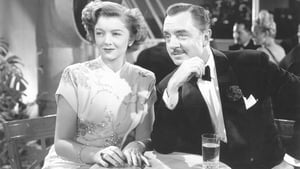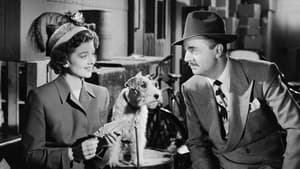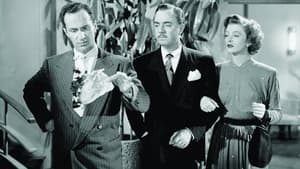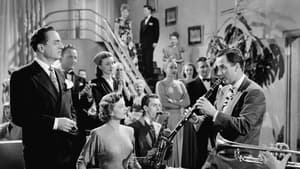Contact: info@alwanfilm.com
Video Sources 0 Views
Synopsis
Review: Song of the Thin Man 1947 Colorized – A Jazzy Caper in the Golden Age of Noir

Introduction
In the rich canon of classic American cinema, few series have endured with the charm and wit of the “Thin Man” films. Among these, Song of the Thin Man (1947) stands as a fascinating conclusion to the beloved series. Set against a backdrop of post-war jazz clubs and crime-riddled streets, the film offers a delightful blend of humor, mystery, and sophistication. This article explores the final chapter in the adventures of Nick and Nora Charles, examining its place in film history, the performances that brought it to life, and the vibrant world it portrays.
Check The Full Colorized Movies List
Check Our Colorized Movies Trailer Channel
Understanding Song of the Thin Man 1947 Colorized: Director, Cast, and Genre
Directed by Edward Buzzell, Song of the Thin Man is the sixth and final installment in the “Thin Man” series. The series, which began in 1934 with the hugely successful The Thin Man, is based on the characters created by Dashiell Hammett. Over the years, the films became synonymous with sophisticated banter, clever mysteries, and the undeniable chemistry between its leads, William Powell and Myrna Loy.
In this film, Powell and Loy reprise their roles as Nick and Nora Charles, the stylish, quick-witted detective couple who have become icons in their own right. Their effortless performances anchor the film, providing both continuity and charm. The supporting cast includes a range of colorful characters, from musicians to gangsters, each contributing to the film’s lively, jazzy atmosphere.
The genre of Song of the Thin Man can be best described as a blend of noir and comedy. It embodies the essence of the detective noir tradition while infusing it with light-hearted humor, a hallmark of the “Thin Man” series. The film’s unique tone, a mixture of suspense and playfulness, reflects the shifting cultural landscape of post-war America, where the optimism of the jazz age clashed with the darker undercurrents of crime and corruption.
Exploring the World of Song of the Thin Man 1947 Colorized: Plot and Characters
Song of the Thin Man takes audiences into the smoky, vibrant world of New York’s jazz scene. The film opens with a murder at a charity gambling benefit, where jazz band leader Tommy Drake (Philip Reed) is found dead. The murder disrupts the seemingly glamorous world of high society and jazz, and soon Nick and Nora are drawn into the mystery.
The couple, with their young son Nicky Jr. (Dean Stockwell), begins to unravel the tangled web of clues, interviewing a host of eccentric characters, including musicians, gamblers, and nightclub owners. As they navigate this world of jazz and danger, their trademark wit and banter keep the mood light, even as the stakes grow higher.
Nick’s investigation leads him into the lives of several potential suspects, each with their own motives for wanting Drake dead. From a hot-headed trumpeter to a mysterious nightclub singer, the cast of characters is both colorful and enigmatic, adding layers to the mystery. Meanwhile, Nora’s social savvy and keen insight prove invaluable, as always, in uncovering the truth behind the murder.
The Noir Atmosphere and Jazzy Vibe
What sets Song of the Thin Man apart from its predecessors is its setting within the world of jazz, which was at its cultural peak in the 1940s. The film’s score, composed by David Raksin, who is best known for his work on Laura (1944), captures the era’s jazz-infused atmosphere perfectly. The music is more than just a backdrop; it is integral to the film’s mood, reflecting the vibrancy and chaos of the world Nick and Nora navigate.
The film’s cinematography, by Charles Rosher, complements this with a blend of light and shadow characteristic of noir films. The use of dark alleys, smoky clubs, and shadowy interiors creates a palpable sense of tension and intrigue. Yet, the film never loses its sense of fun, with Nick and Nora’s banter providing a humorous counterpoint to the more serious elements of the plot.
The Golden Age of Hollywood: A Brief History of the Thin Man Series
The “Thin Man” series began in 1934, at the height of Hollywood’s Golden Age. The original film was based on Dashiell Hammett’s novel of the same name, and it was an immediate success, thanks in large part to the chemistry between its stars, William Powell and Myrna Loy. Over the next 13 years, the series would produce six films, each one a hit with audiences.
The success of the series can be attributed to several factors. First and foremost was the undeniable chemistry between Powell and Loy, whose portrayal of Nick and Nora Charles set the standard for on-screen couples. Their witty repartee, combined with the film’s stylish direction and clever plots, made the series a staple of 1930s and 1940s cinema.
The series also benefited from strong writing and direction, with contributions from some of the era’s best screenwriters and directors. From W.S. Van Dyke, who directed the first four films, to Edward Buzzell, who directed the final two, each film maintained a consistent tone and quality, ensuring the series’ lasting appeal.
The Jazz Influence on Song of the Thin Man 1947 Colorized
Jazz is not merely a backdrop in Song of the Thin Man; it is a character in its own right. The film’s jazz-infused score and setting reflect the cultural zeitgeist of the 1940s, when jazz was at its peak in America. The smoky, dimly-lit clubs and the vibrant, improvisational music mirror the film’s tone—unpredictable, energetic, and full of life.
Jazz also plays a critical role in the film’s narrative, with several key plot points revolving around the world of jazz musicians. The film’s characters, from the enigmatic singer Fran Ledue Page (played by Gloria Grahame) to the smooth-talking band leader Buddy Hollis (Keenan Wynn), embody the spirit of the jazz age. Their lives are as complex and improvisational as the music they play, adding depth to the film’s mystery.
The Evolution of Noir: Song of the Thin Man 1947 Colorized in Context
While Song of the Thin Man retains the light-hearted tone of its predecessors, it also reflects the darker, more complex themes that were becoming prevalent in post-war noir films. The 1940s saw the rise of film noir, a genre characterized by its cynical worldview, morally ambiguous characters, and stark visual style. Song of the Thin Man blends these elements with the humor and wit that defined the “Thin Man” series, resulting in a film that is both familiar and refreshingly different.
The post-war setting of Song of the Thin Man introduces a sense of unease that was not as prevalent in earlier films in the series. The world Nick and Nora inhabit in this film is more corrupt, more dangerous, and more uncertain. This shift mirrors the broader changes in American society in the late 1940s, as the country grappled with the aftermath of World War II and the beginning of the Cold War.
Critical Reception of Song of the Thin Man 1947 Colorized
Upon its release, Song of the Thin Man received mixed reviews. While some critics praised the film for its humor and stylish direction, others felt that the series had lost some of its original charm and vitality. However, the performances of Powell and Loy were universally acclaimed, with many noting that their chemistry remained as strong as ever.
Over the years, Song of the Thin Man has been reevaluated by critics and historians, many of whom now regard it as an underrated gem in the “Thin Man” series. While it may not have the same cultural impact as the original film, it remains a stylish and entertaining conclusion to one of Hollywood’s most beloved series.
The Legacy of Song of the Thin Man 1947 Colorized and the End of an Era
Song of the Thin Man marks the end of an era in Hollywood. The film was released at a time when the studio system that had dominated Hollywood for decades was beginning to decline. The rise of television, the breakdown of the studio system, and the changing tastes of audiences all contributed to the end of the Golden Age of Hollywood.
The “Thin Man” series, with its blend of humor, style, and mystery, is a perfect encapsulation of this era. The films were light-hearted yet sophisticated, entertaining yet intelligent. They offered audiences an escape into a world of glamour and intrigue, a world where the good guys always won, and the bad guys got what was coming to them.
With the release of Song of the Thin Man, this world came to an end. The film’s conclusion, with Nick and Nora solving their final case and returning to their life of luxury, serves as a fitting farewell to the series. It is a reminder of a bygone era, when Hollywood films were made with a level of craftsmanship and care that is rarely seen today.
Where to Watch Song of the Thin Man 1947 Colorized Online
For fans of classic cinema or those looking to discover the charm of the “Thin Man” series for the first time, Song of the Thin Man is available on several streaming platforms. It can be found on services like Amazon Prime, Apple TV, and the Criterion Channel, which often feature curated collections of classic films.
In addition to streaming, the entire “Thin Man” series is available on DVD and Blu-ray, often packaged together as a box set. These sets typically include bonus features such as behind-the-scenes documentaries, interviews with film historians, and restored versions of the films, making them a must-have for any fan of classic cinema.
FAQs About Song of the Thin Man 1947 Colorized
Q: How does Song of the Thin Man compare to the earlier films in the series?
A: While it retains the humor and charm of the earlier films, Song of the Thin Man introduces a darker, more noirish tone that reflects the changing cultural landscape of post-war America. Some fans prefer the lighter, more carefree feel of the earlier films, but others appreciate the added complexity and depth of the final installment.
Q: Why was Song of the Thin Man the last film in the series?
A: By the time Song of the Thin Man was released in 1947, the Hollywood landscape was changing. William Powell and Myrna Loy were both nearing the end of their careers, and the rise of television and the decline of the studio system meant that fewer resources were being devoted to film series like the “Thin Man.” As a result, Song of the Thin Man became the final chapter in the series.
Q: What makes the chemistry between William Powell and Myrna Loy so special?
A: The chemistry between Powell and Loy is often cited as one of the greatest in film history. Their on-screen relationship is characterized by wit, mutual respect, and a genuine sense of affection, which made them one of Hollywood’s most beloved couples. This chemistry was a key factor in the success of the “Thin Man” series.
Conclusion
Song of the Thin Man 1947 serves as a fitting finale to one of Hollywood’s most beloved film series. While it introduces a darker, more complex tone that reflects the changing post-war landscape, it never loses the charm, wit, and sophistication that made the “Thin Man” films so popular.
As the last hurrah for Nick and Nora Charles, Song of the Thin Man offers fans a satisfying conclusion to their adventures, while also serving as a snapshot of a pivotal moment in film history. Whether you’re a longtime fan of the series or discovering it for the first time, this film remains a testament to the enduring appeal of classic Hollywood cinema.



















